Can You Earn Money with PopAds.net Traffic?
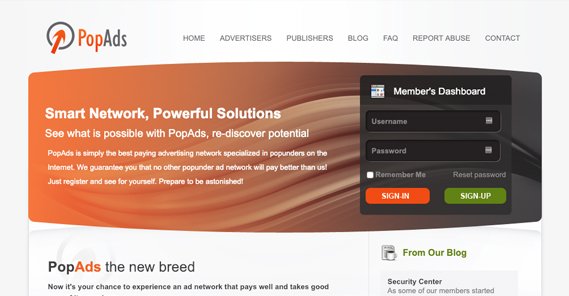
PopAds is one of a wide range of ad networks available for publishers looking to earn some extra cash. It operates using pop-under advertising, which may or may not be ideal for your situation. If you’re interested in learning more, read on.
What Is PopAds.net?
PopAds is an ad network. It’s not an ad network that uses embedded ads on your site, overlays in front of videos, or other sorts of display ads, however. Rather, PopAds uses pop-unders, a kind of ad format that has been in and out of favor for years.
PopAds has a few benefits over old-school pop-under and pop-up advertising. It still opens a new window, but that window is layered below the current window, so the user doesn’t have their browsing of your site disrupted. More importantly, it waits to trigger until the user clicks somewhere within your site. This minimizes the immediate bounces that occur when a pop-up or pop-under shows up, from those web users who are sensitive to that kind of thing.

The PopAds network has been around since 2010 and has adapted well with the times, making it one of the larger and most successful pop-up based advertising networks available today. Pop-ups and pop-overs are generally frowned upon, while pop-unders tend to skirt by because it’s more difficult with long browsing sessions to identify which site originated the ad.
The Benefits of PopAds
PopAds has a few benefits as an ad network. First of all, they have a fairly large range of advertisers, meaning you’ll pretty much never be left with un-filled ad space. Since the ads require a click to appear, your bounce traffic and short-lived visits won’t dilute your click rates.
The ad network is also very liberal with their acceptance of websites. It’s not like something like Taboola or Outbrain, where you need hundreds of thousands of visitors to even get into the network. Essentially any website is allowed so long as it doesn’t violate the laws of the United States or, interestingly, Costa Rica. Costa Rica is included because it’s the location that PopAds is using for their headquarters.
Basically, that means sites that advertise gambling or pornography are fine, but sites that sell weapons or illegal drugs are generally not. There may be some quirks about the Costa Rican law that I don’t know, but I imagine it’s largely what you might be familiar with.
One major benefit of PopAds is that publishers can set the minimum bid for their site. This requires that advertisers who want to advertise on your site have a minimum bid, so you’re not spamming your audience with low-quality advertising and only earning a few cents per click.
PopAds also uses a system that, since it requires a user action to open the window, tends to bypass most pop-up blockers. It’s not entirely reliable – some blockers still catch it, and disabling scripts site-wide will catch it – but it’s better than most pop-up based ad networks.
PopAds claims that their system is allowable under Google’s rules, specifically for AdWords – now known as Google Ads – but they disavow any responsibility if it gets your Google Ads account sanctioned or restricted. If that happens, of course, it will be up to you to decide which you would rather prioritize.
Because of the unique bidding system that PopAds uses, there’s a certain level of diminishing returns for publishers. You can choose how many pop-unders a particular visitor will receive, but each additional pop-under is typically filled with a lower bidder than the initial ad. This means allowing 1 pop-under might be more valuable in the long run than allowing 2 or 3.
Additionally, there seems to be mention of a daily limit of pop-unders for publishers, at least in the PopAds FAQ section. I don’t know what this limit is, but it does potentially set a limit on the amount you can earn per day.
The PopAds network is global, with a presence around the world. They have advertisers and publishers throughout over 50 countries, though of course some of them are going to be much less valuable than others. You will have to look to see if your country is supported.
Can You Earn Money With PopAds?
A short section here, but yes, you can earn money using the PopAds pop-under network. There are some caveats to it that I’ll go into later, but it’s not a scam and it does pay people. In fact, the payment is on request, rather than NET30 or another regular distribution.
PopAds claims that their average revenue for publishers has never gone below $4 per 1,000 pop-unders. This isn’t the highest rate in the world, but it’s far from the lowest. As usual with any ad network, it largely depends on a wide variety of factors.
PopAds also has an affiliate/referral program. When a user signs up as a publisher using your link, you get 10% of their earnings. When a user signs up as an advertiser using your link, you get 10% of their ad spend. All in all, it’s not a bad deal. Frankly, that’s likely where the biggest success stories come from. None of the links in this post are affiliate links, by the way.
This author posted their experience with PopAds. Their rates ranged around $2.50 per 1,000 views from the USA, $1.50 for Australia, and $2 for most of Europe. For India it was 60 cents, for the Philippines it was 30 cents, and so on. Well below the promised $4 per 1K views, but that’s the way it always is with ad network advertising.
Maximizing Earnings with PopAds
If you’re interested in using PopAds to make money as a publisher, here are my tips for making the most of the network.
Target high value countries. You would be right in assuming it’s the usual suspects here. The USA, Canada, Europe, Australia, and so on tend to be the high paying countries, while countries in the middle east and south east Asia tend to have much lower rates. Unfortunately, a sizable proportion of PopAds traffic comes from Brazil, which is also not a high value country.
Make sure to set your category and restrict advertiser categories. Your category helps ensure there is a match between your content and the content of the ad. Of course, it helps if you’re in one of the niches that is most commonly represented within the PopAds network.
Which categories are those? Well, if you remember it’s a pop-under network, you’ll have a pretty good idea. According to PPCMode and my own research, most of the advertisers and most of the publishers in the network are in the adult content niche, with others in file sharing, image hosting, web/Flash games, and gambling. There’s also a lot of sites in various automotive niches, usually in auto sales (through shady subprime auto lenders or used car lots) and in insurance.
File sharing in particular is not a great niche to allow. The kinds of people who are interested in file sharing are not the kinds of people who want to pay for anything, so the traffic is pretty low quality and won’t earn you much. Other niches, particularly adult niches, tend to be better performing.
Pick offers that you know you can fulfill as much as possible. You pick offers to participate in, but if your metrics for them are low enough – that is, low click and conversion rates – the people managing the offers can blacklist your site from them. In particular, click-to-download offers and other sorts can be difficult to convert, especially with pop-unders. You can try the offers, but you are liable to be kicked if you underperform.
Make sure to set a moderate minimum bid. If you set your minimum bid too low, you’ll be flooded with low quality advertising and will eat up your quota of daily pop-unders very quickly. Your rates will be low, though of course if that’s acceptable to you, go for it. I personally prefer higher rates that result in fewer ads, but higher quality and higher value ads.
Conversely, don’t set your minimum bid too high. If you set the level too high, you’re cutting out too many advertisers, and the remaining audience might not want to advertise on your site. If your site is really good, you may be able to swing yourself as a premium publisher, but I wouldn’t count on it.
Do what you can to encourage clicks on your site. Since PopAds requires a user interaction to trigger the pop-under, you will perform much better if you have some reason for your user to click on your site. Ironically, pop-over light boxes are a great way to do this, since they’re disruptive enough to require a click, but not so disruptive that they drive users away.
Monitor your metrics and maintain a level of agility. The pricing and bidding for ads will waver throughout the week, with lower rates on weekends simply because of the number of businesses that shut down for weekends. Keep an eye out and don’t be afraid to adjust your minimum bids and other targeting on the fly.
Why I Don’t Recommend PopAds
All of the above makes this seem like a decent ad network, somewhere in the middle of the road. I have to say, however, I don’t want to recommend PopAds to my readers. Why not? Several reasons.
First of all, PopAds has by all reports gone significantly downhill in the last few years. Every time a post is published on a high profile marketing blog about PopAds, a flood of low quality publishers streams in. This decreases the average quality and value of the network, which means advertisers spend less money. When advertisers spend less, publishers make less, driving the whole network down. The addition of the third point on this list makes it even worse.
Secondly, pop-up and pop-under advertising is, frankly, a bit annoying to your website users. There’s a reason most websites have transitioned to display advertising, affiliate marketing, or lightbox-based advertising. Having tabs or windows appear when you didn’t want them is a prime violation of the user experience. Some people are more sensitive to it than others – I’m not the biggest fan – but in general pop-ups are an outdated technique struggling to maintain relevance.
Third and perhaps most importantly, PopAds has been abused by hackers. There are a handful of pieces of malware and viruses that run hidden browser windows and constantly browse PopAds for the benefit of the hacker. This is a guilt by association issue: PopAds is not responsible for these, nor do they sanction them. However, the fact is, it’s a network used by viruses, and there’s always the possibility that it will serve malicious ads to your traffic.
Personally, the risk isn’t worth it. I don’t want to risk subjecting my audience to the kinds of issues PopAds can bring with it, so I don’t recommend it. You all, however, are adults capable of making your own decisions. Feel free to give them a try and see if you like them more than I do.
To be honest, I would only use PopAds on a site that I’m using for experimentation, or one that’s running in one of the niches that isn’t normally allowed on most ad networks. Even then, the ads that appear can be shady, and you probably want to monitor them to make sure you aren’t accidentally serving malware to your audience. Exercise caution and you can make some money, but frankly, there are better options available.
 ContentPowered.com
ContentPowered.com
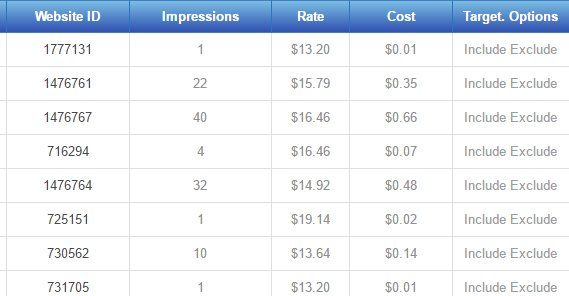
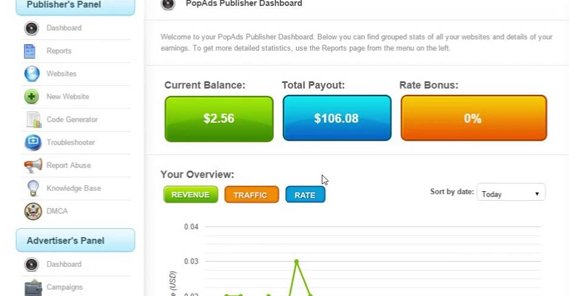

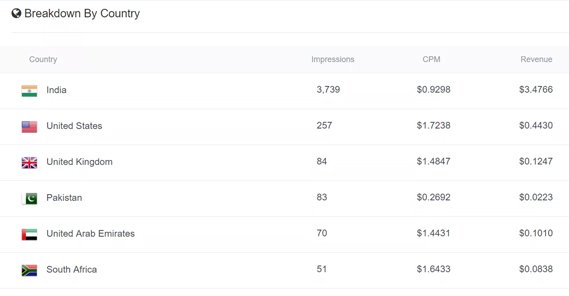
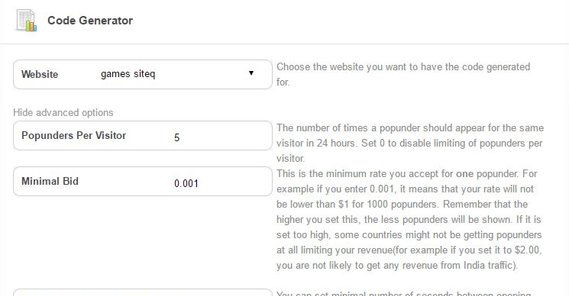
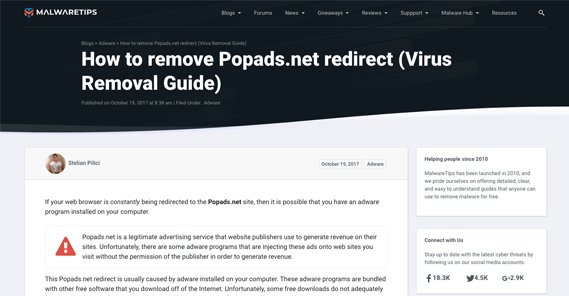




Thank you so much for this information. Can you suggest the best ads aside from AdSense?
Hi Rafi! We wrote an article on that here: https://growtraffic.com/blog/2016/08/alternatives-google-adsense